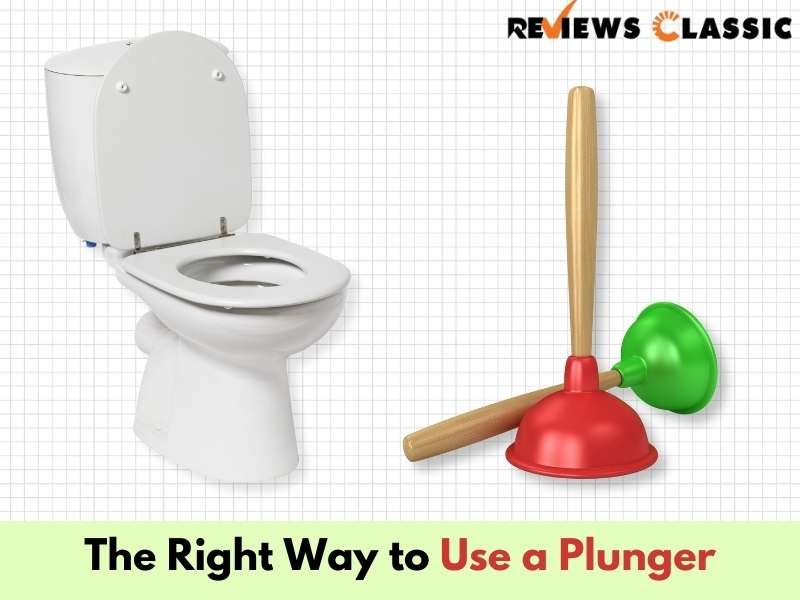How To Use Plunger On Toilet – Everything You Need To Know
The most annoying thing about toilets is when they get clogged. It’s a fairly common, yet often frightening, plumbing problem that almost everyone has to deal with at some point in their lives.
However, this common problem has different solutions. For example, you can use a plunger or toilet snake. Also, you can use liquids like hot water, household bleach, dish soap, or call a plumber.
So, from all these solutions Plunging your clogged toilet is the easiest and simplest option. Now, you may be wondering How To Use Plunger On Toilet. Well, to successfully use a plunger to unclog your commode, you need to follow some simple instructions.
But first, let’s speak about plungers and how to choose one that actually works.
How to Choose the Best Plunger?
A plunger is characterized by a long handle with a large rubber cup at the end. While the plunger’s design is simple, it’s a really effective tool for unclogging stuff.
In other words, when you use a plunger properly, it can unclog pipes and make them operate more effectively.
There are two most common types of plungers you will get in a grocery store. They are the cup plunger and the flange. Also, there are common sink plungers and accordion plungers in the market.
Though, its a great way to keep one of these on hand and become familiar with their capabilities so you can pick which one is ideal for your mini-emergencies like toilet clogs.
Cup Plunger
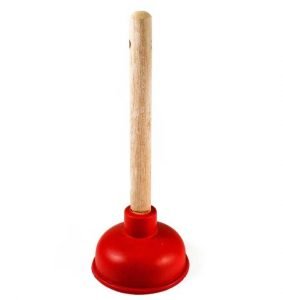
It features a cup (the red one) with a wooden handle. This plunger is best for flat surfaces like sinks and shower drains. The cup plunger works by creating a vacuum seal with its rubber cap over the drain or toilet opening.
More specifically, when the handle is pushed, the pressure of the water traveling up and down will eliminate the obstruction and allow the water to flow freely again.
Flange Plunger

It has a somewhat big cup (usually black) with a smaller inner cup joined by a handle. This plunger is ideal for toilet bowls since it can be put more securely into the aperture of a toilet bowl. You can use the flange plunger as an all-purpose plunger. It’s because the smaller cup may be pushed back into the larger cup to form the same shape as a standard cup plunger.
Accordion Plunger
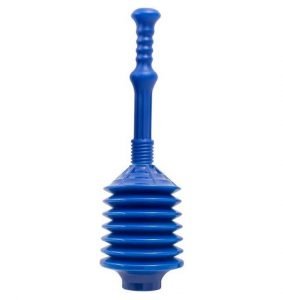
This plunger is not as popular as the cup plunger or flange plunger as it isn’t as simple to operate as a regular or flange plunger. Since it is composed of hard plastic rather than rubber, making it harder to establish a seal around the aperture.
However, this plunger is the strongest one compared to other common plungers. It’s because once the seal is formed, the accordion ridges provide a powerful suction, allowing you to unclog a drain with less effort.
So, according to your needs and conditions, you can use these three different types of plungers for your clogging problems.
However, a flange plunger would be a great choice if you have a clogged toilet.
How To Use a Plunger Successfully Step by Step
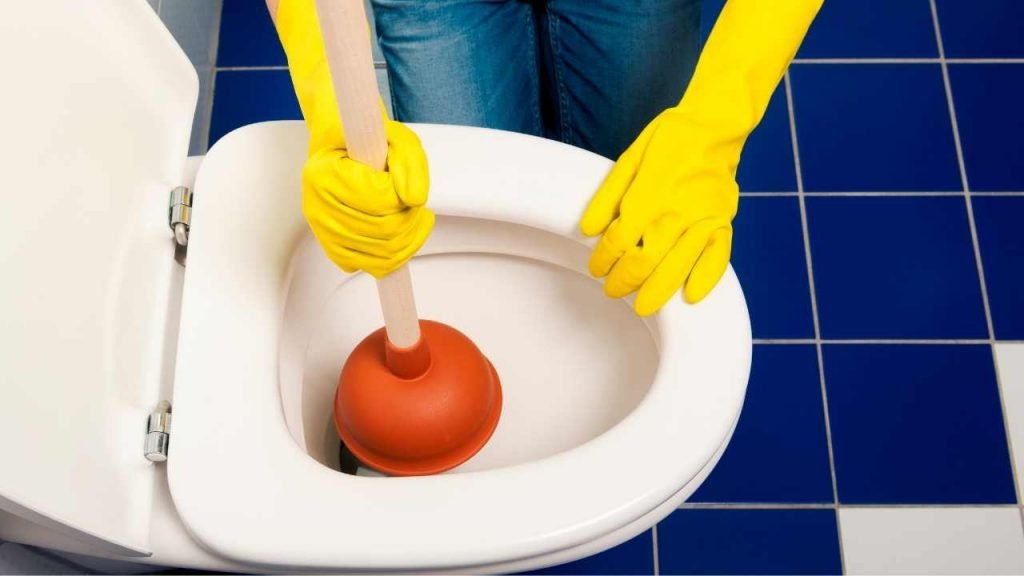
There are a few basic techniques that you may use to properly unclog your toilet using a plunger. So, let’s discuss.
Step:1 – Prepare yourself
It’s a great idea if you stay prepared for any possible mess while working with your clogged toilet. So, what you can do is –
- Put on a gloves
- Cover the floor (you can use newspaper or paper towels)
- Keep a rubbish pile nearby
These precautions are because depending on the substance blocking the toilet, it might get nasty.
Step:2 – Fill the toilet bowl with water
It’s best to immerse the plunger head in the water while dealing with plungers. In other words, you’ll need enough water to cover the plunger’s rim. Don’t be concerned if something is floating in the toilet bowl. If required, fill the bowl with water.
However, if the water starts to overflow as you begin plunging, grab a cup and carefully remove part of it. Also, if there isn’t enough water in the toilet, add some so that the plunger may be submerged.
Step:3 – Set up the plunger
Insert your flange plunger into the toilet bowl at a 45-degree angle. The rationale for this is that it will retain more air as well as produce more downward pressure.
Now, position the flange plunger in the opening at the bottom of the toilet to make a tighter seal after the plunger is in the water.
In other words, make sure that the plunger creates a complete and strong seal around the toilet bowl’s hole.
Step:4 – Work with the plunger
Now you have to put some physical force to complete the process. First, grip the plunger handle with both hands and try to push down on the cup forcefully. Then Push down with a gentle shove at least two to three times.
However, you can continue as needed until the water level in the bowl drops. So, the idea is to produce fast alternating compression and suction forces in the toilet drain in order to remove the blockage.
Though, you must keep the seal in place until the plunging process is completed. Because if you don’t have a good seal, you won’t be able to apply enough pressure or force to unclog your toilet.
So, if your pressing appears to be blowing out the side of the cup rather than down into the hole, adjust the plunger’s cup and try again.
Step:5 – Check the clog
After working with your plunger, check if the water recedes. Also, check if a non-flushable object has been dislodged. Now, flush the toilet, and if it flushes normally, you’re finished and may replace the tank cover.
However, if this doesn’t work, reach into the tank and push the flapper down over the opening to halt the passage of water from the tank to the bowl. Finally, when the tank has finished refilling, plunge the toilet once again.
Plunging Pro Tips
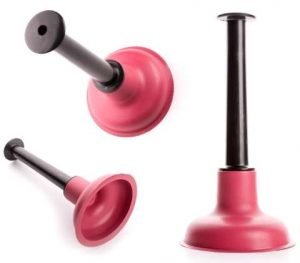
Always start with a gentle plunge as the bell will be full of air. In other words, a strong shove will drive the air back around the seal. It will cause water to splatter all over the bathroom and you also!
While plunging, always try to maintain some downward pressure. It’s because if you ease off on the pressure fully, the seal surrounding the cup will be broken.
Maintain a sufficient amount of water in the bowl to keep your plunger submerged. Because forcing air via the toilet trap will not provide much pressure.
While plunging, alternate between calm strokes and monstrous heaves to see what works best for you.
Stay patient because it may take some time and requires repeated plunging movement.
Remember to select the flange-style plunger for maximum suction and make sure the flange is fully extended.
Do not use any chemicals while working with plungers. It’s because mixing bleach with any vinegar-based home cleaner can result in harmful chlorine gas emissions.
When Plungers Fail, What Should You Do?
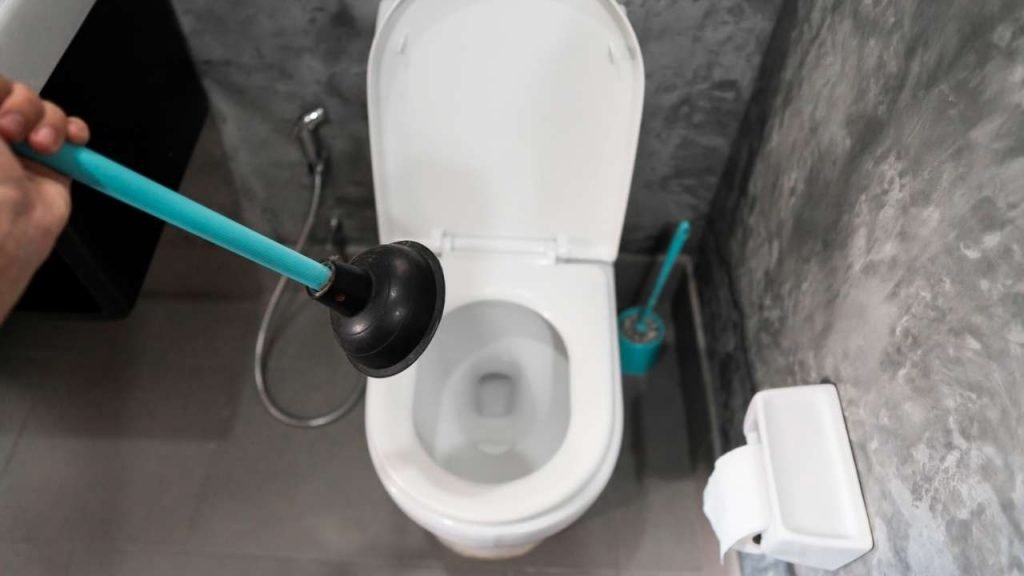
Sometimes the clogging problem gets more severe when you can’t solve this with plungers. So, in these cases, what should you do? Well, you have three options –
- Using a toilet auger or plastic drain snake
- Using one of those chemical drain cleaners
- Calling a plumber
A toilet auger, sometimes known as a closet auger, is a device that removes waste from a toilet.
It consists of a handle that spins a flexible metal wire capable of penetrating drain clogs. To remove the clog first, insert the cable end into the toilet. Then crank the handle while forcing the cable down into the toilet trap.
You can also break up a tough clog using a toilet auger. The cable’s corkscrew tip can catch onto hard blockages in the toilet trap and eventually pull them out.
Toilet augers are more expensive than toilet plungers. Moreover, it’s a single-use tool only for toilet clogs.
Chemical drain cleaners also work effectively on toilet clogging problems. However, these chemicals must be handled with caution.
These compounds are so potent that they can dissolve and oxidize organic debris that clogs toilets. Chemical drain cleaners can also pass through standing water in your blocked toilet bowl since they are heavier than water.
However, it is preferable to utilize homemade cleansers rather than chemicals. Baking soda or vinegar are both considerably safer for your toilet pipes.
Also, you can use hot water with dish soap to unclog blocked toilets. The process works like this –
Begin by heating water in a water heater. Fill a bucket halfway with hot water, add some liquid dish detergent, and pour the solution into the toilet bowl. Allow a few minutes for the hot water to soften whatever was clogging the pipe before flushing it again.
Finally, if you don’t want to perform any of these things and instead hire an expert to manage your clogging issues, you can call a plumber.
How to Take Care of Your Plunger?
It is critical to clean your plunger after each use to maintain its sanitary condition.
So, to clean and sterilize the plunger, add a bathroom cleaner or bleach to the water, stir it around, and flush again. Allow it to air dry in the tub or shower before placing it in a plastic bag or other container and storing it in a closet or cupboard.
You can also use hot and running water to clean your plunger.
Final Thoughts
Plungers are a handy tool for any type of clogging issue. Standard plungers are appropriate for sinks and drains, whereas flange plungers are best for toilets.
A few fast thrusts should be enough to clear the obstruction, but if it’s a harder clog, you may need to use a drain snake or auger.
Also, try to avoid chemical drain cleaners since they might cause more harm than benefit to your plumbing.
Finally, if the condition does not improve or you don’t want to work things out on your own, contact a plumber.

